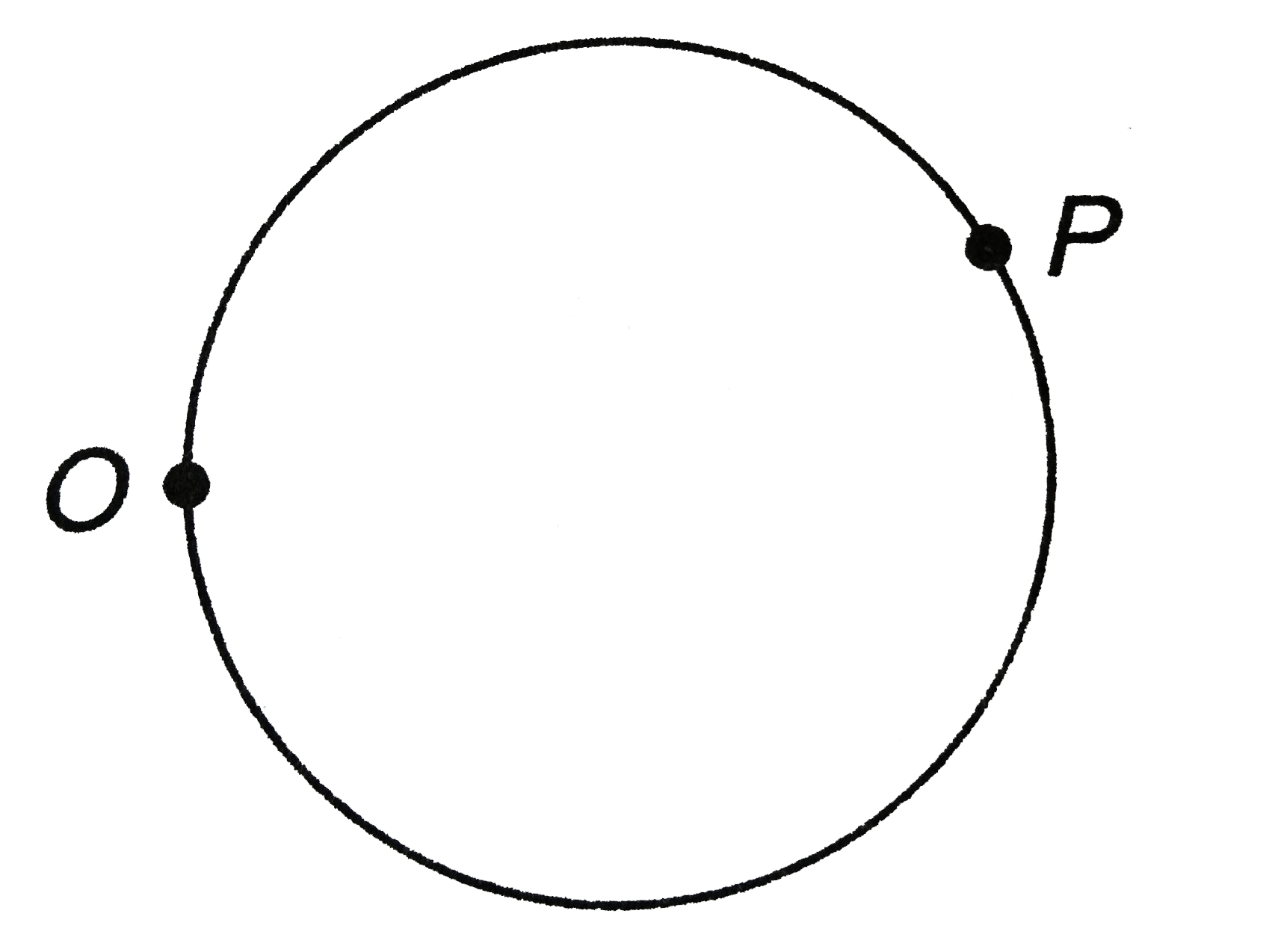A particle of mass m moves in a circle of radius R with a uniform speed v.
(i) the angular speed of particle is v/R.
(ii) the time period of revolution is 2πR/v.
(iii) the acceleration of particle is v2/R.
(iv) the work done by the centripetal force in half revolution is (mv2/R)×πR.
(i),(ii)
(ii),(iii)
(ii),(ii),(iii)
All options are correct
The correct Answer is:C
To solve the problem step by step, we will analyze each statement regarding the motion of a particle of mass m moving in a circle of radius R with uniform speed v.
Step 1: Angular Speed
The angular speed (ω) of a particle moving in a circle is given by the formula:
ω=vR
Where:
- v is the linear speed of the particle.
- R is the radius of the circle.
Thus, the first statement is correct.
Step 2: Time Period of Revolution
The time period (T) of one complete revolution is the time taken to travel the circumference of the circle. The circumference (C) of a circle is given by:
C=2πR
Since the speed is uniform, the time period can be calculated as:
T=Cv=2πRv
Thus, the second statement is correct.
Step 3: Acceleration of the Particle
In uniform circular motion, the particle experiences centripetal acceleration (a_c), which is directed towards the center of the circle. The formula for centripetal acceleration is:
ac=v2R
Since the speed is constant, there is no tangential acceleration. Therefore, the third statement is correct.
Step 4: Work Done by the Centripetal Force
The work done (W) by a force is given by the formula:
W=F⋅d⋅cos(θ)
Where:
- F is the force,
- d is the displacement,
- θ is the angle between the force and displacement.
In the case of centripetal force, it acts perpendicular to the direction of motion of the particle. Since the angle θ=90∘, we have:
cos(90∘)=0
Thus, the work done by the centripetal force is:
W=F⋅d⋅0=0
Therefore, the fourth statement is incorrect.
Summary of Statements
1. Angular speed is vR - Correct
2. Time period of revolution is 2πRv - Correct
3. Acceleration of the particle is v2R - Correct
4. Work done by the centripetal force in half revolution is mv2R⋅πR - Incorrect
The angular speed (ω) of a particle moving in a circle is given by the formula:
- v is the linear speed of the particle.
- R is the radius of the circle.
The time period (T) of one complete revolution is the time taken to travel the circumference of the circle. The circumference (C) of a circle is given by:
In uniform circular motion, the particle experiences centripetal acceleration (a_c), which is directed towards the center of the circle. The formula for centripetal acceleration is:
The work done (W) by a force is given by the formula:
- F is the force,
- d is the displacement,
- θ is the angle between the force and displacement.
1. Angular speed is vR - Correct
2. Time period of revolution is 2πRv - Correct
3. Acceleration of the particle is v2R - Correct
4. Work done by the centripetal force in half revolution is mv2R⋅πR - Incorrect
Topper's Solved these Questions
Similar Questions
Knowledge Check
- Question 1 - Select One
The acceleration of an object moving in a circle of radius R with uniform speed v is
Av2RBv22RC2v2RD3v22R - Question 2 - Select One
A particle of mass m is moving on a circular path of radius r with uniform speed v , rate of change of linear momentum is
AZeroBIndependent of speedCProportional to radius rDProportional to v2 - Question 3 - Select One
A particle of mass m describes a circle of radius r with a uniform speed v. The centripetal acceleration of the pariticle is 4r2 .What is the magnitude of the linear momentum of the particle ?
A2m√rB2mrC4m√rD4mr
A charge particle (charge q ) is moving in a circle of radius R with uniform speed. v The associated magnetic moment m is given by
View SolutionA charged particle (charge q) is moving in a circle of radius R with uniform speed v. The associated magnetic moment μ is given by
View SolutionA charged particle (charge q) is moving in a circle of radius R with uniform speed v. The associated magnetic moment μ is given by
View SolutionA charged particle (change q ) is moving in a circle of radius R with uniform speed v. The associated magnetic moment μ is given by
View SolutionIf a particle is moving in a circular path of radius 'r' with a uniform speed v, then the angle described by it in one second will be
View Solution


